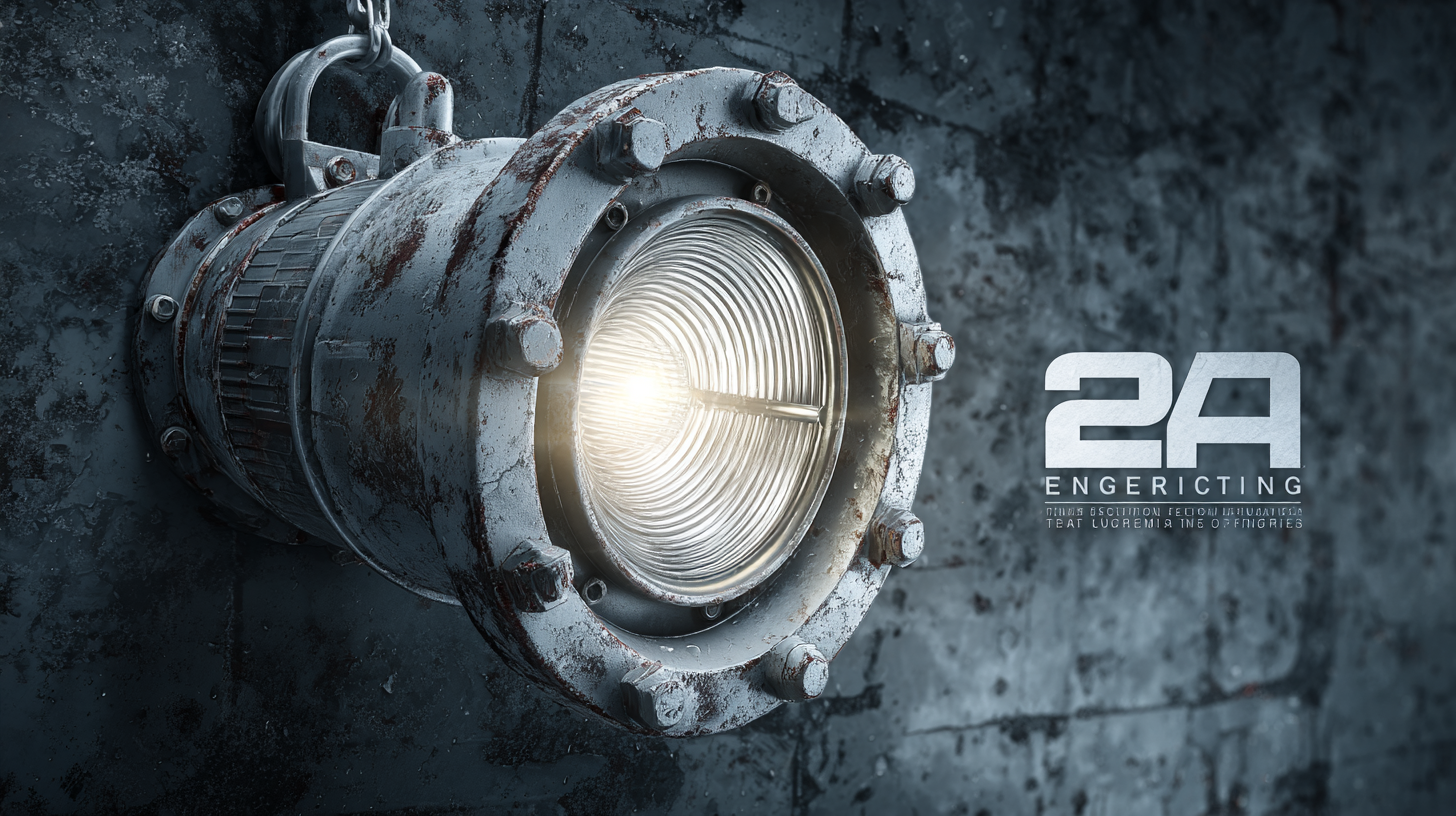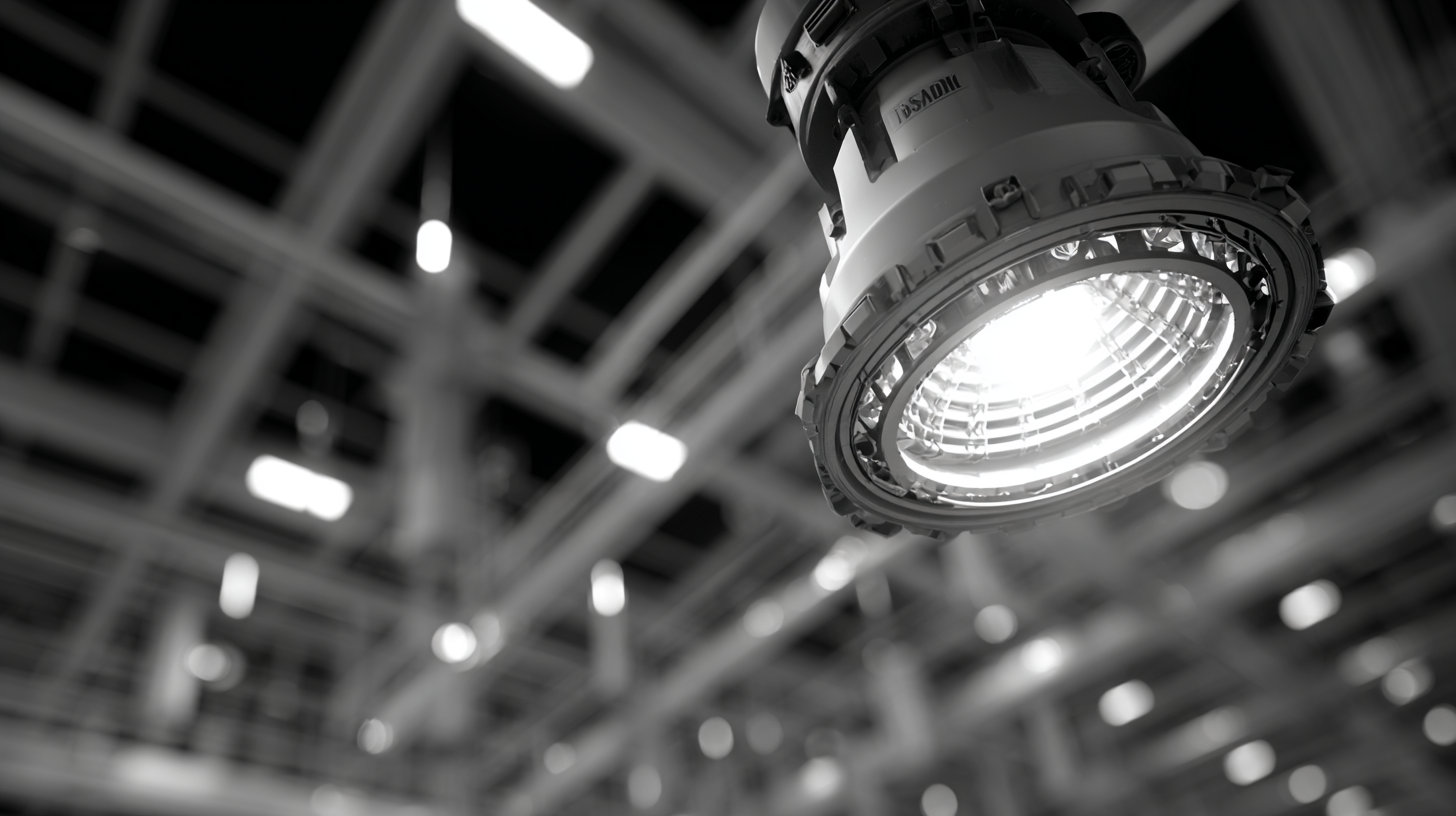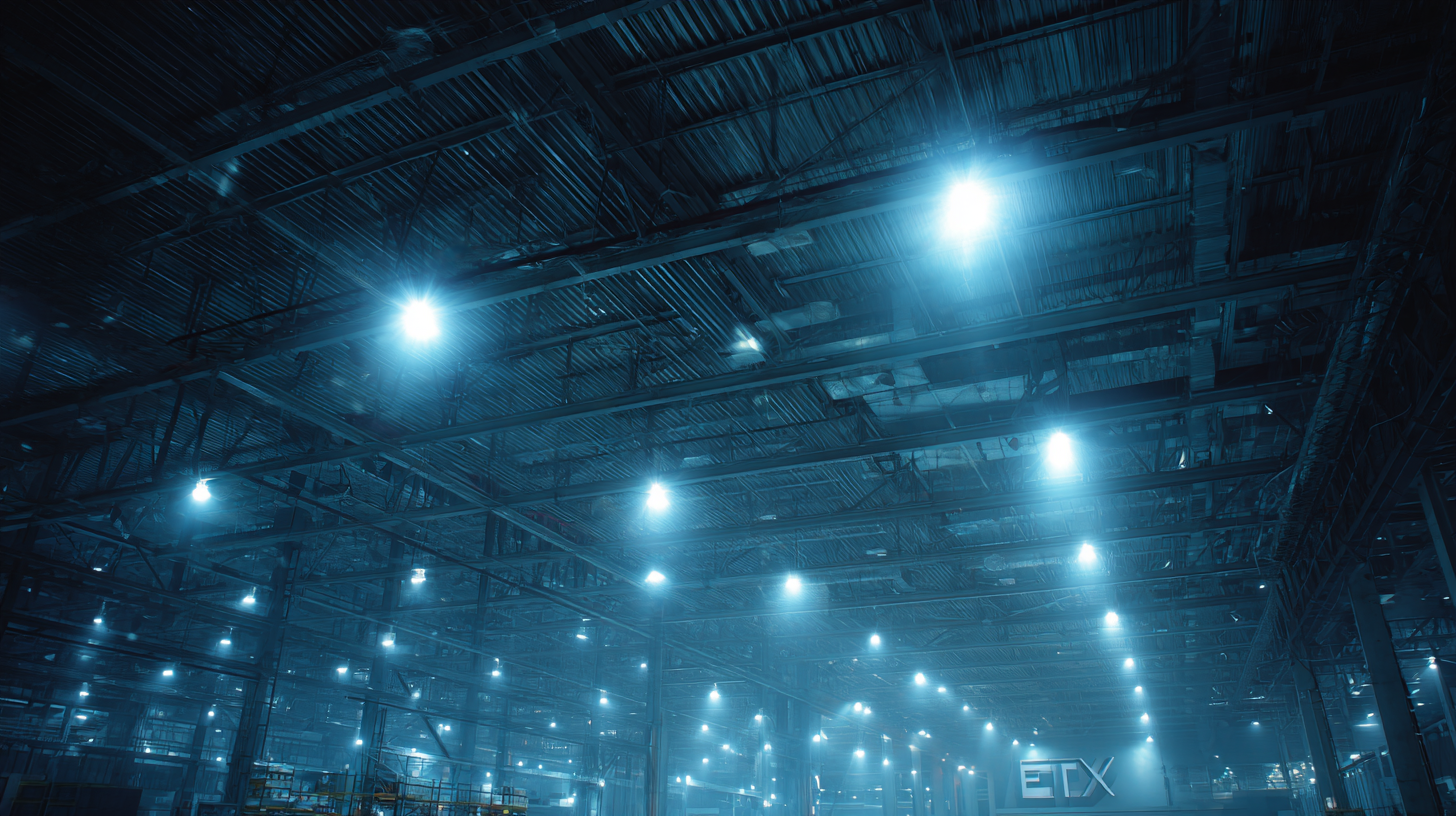
Unlocking Efficiency: 20 Technical Specifications of the Best Industrial Lighting Solutions
As we move towards 2025, the industrial lighting sector is poised for remarkable growth, driven by advancements in technology and heightened awareness of energy efficiency. According to a recent report by MarketsandMarkets, the global industrial lighting market is expected to reach USD 20.8 billion by 2025, expanding at a CAGR of 6.9%. This surge is largely attributed to the increasing demand for smart lighting solutions that enhance operational efficiency while reducing energy consumption.

Industrial lighting plays a crucial role in optimizing productivity and safety within manufacturing facilities, warehouses, and logistic centers. The transition towards LED technology and the integration of IoT are pivotal in this evolution, enabling real-time monitoring and control over lighting systems.
In this blog, we will explore 20 key technical specifications that define the best industrial lighting solutions, emphasizing their significance in shaping a brighter, more efficient future for the industry.
Key Features to Look for in High-Performance Industrial Lighting Solutions
When selecting high-performance industrial lighting solutions, it's essential to focus on key features that enhance efficiency and productivity. One major factor is energy efficiency; LED lighting systems are often the best choice as they consume less power and have a longer lifespan compared to traditional bulbs. This not only reduces energy costs but also minimizes maintenance needs, allowing your team to concentrate on their core tasks rather than frequent replacements.
Another critical aspect to consider is the brightness and color temperature of the lighting. Adequate illumination levels are vital for ensuring safety and reducing accidents in industrial environments. It’s advisable to choose lighting solutions that provide adjustable brightness and a color temperature that mimics natural light, which can help reduce eye strain for workers operating in high-demand areas.
Lastly, durability is a non-negotiable feature for industrial lighting. Look for products rated for impact resistance and environmental factors, like moisture or dust protection. Industrial settings often expose lighting fixtures to harsh conditions, so choosing fixtures designed to withstand these elements is essential. Prioritizing these specifications will lead to more effective and reliable industrial lighting solutions.
Comparative Analysis of LED vs. Traditional Industrial Lighting Technologies
When it comes to industrial lighting, the choice between LED and traditional technologies can have significant implications for operational efficiency and energy consumption. According to the U.S. Department of Energy, LED lighting uses at least 75% less energy than incandescent lighting and lasts 25 times longer, making it a game-changer in industrial settings where lighting is required for lengthy shifts. This substantial energy saving not only reduces utility bills but also lowers the overall carbon footprint of manufacturing operations.
A recent report by MarketsandMarkets suggests that the global industrial LED lighting market is projected to reach $11.4 billion by 2025, reflecting a compound annual growth rate (CAGR) of 9.0%. This growth is driven by the long lifespan and durability of LED systems, which significantly minimizes maintenance costs associated with traditional lighting solutions, such as fluorescent and metal halide bulbs. Furthermore, advanced LED systems offer better control through dimming and smart technology integration, enhancing productivity by providing optimal lighting conditions as needed. As industries push towards automation and sustainability, the shift towards LED lighting technology reaffirms its position as the preferred choice for modern industrial environments.

Energy Efficiency Metrics: How to Evaluate Industrial Lighting Options
When evaluating industrial lighting options, energy efficiency metrics play a vital role in ensuring that businesses not only cut down on operational costs but also minimize their environmental footprint. According to the U.S. Department of Energy, LED lighting can reduce energy consumption by up to 75% compared to incandescent bulbs, making them a top choice for industrial settings where lighting is on for extended hours. The efficiency of a lighting solution can also be measured using metrics such as lumens per watt (lm/W), which indicates how much light is produced for each watt consumed. Solutions with a higher lm/W ratio are often more desirable in reducing energy costs.
Tip: When assessing potential lighting solutions, always ask for their Energy Star ratings or other efficiency certifications. This ensures that you are considering products that meet industry standards for energy consumption.
Additionally, understanding the total cost of ownership (TCO), including maintenance and replacement costs, is crucial. Reports from the Lighting Research Center indicate that over the lifespan of a lighting solution, maintenance costs can add significant expenses. Therefore, choosing fixtures with longer lifespans and easier maintenance can lead to better long-term savings.
Tip: Conduct a lighting audit to assess current usage and identify opportunities for upgrades. This will provide insight into the most effective industrial lighting solutions tailored to your facility's needs.
Energy Efficiency Metrics of Industrial Lighting Solutions
Durability and Longevity: Essential Specs for Industrial Lighting Fixtures
When selecting industrial lighting fixtures, durability and longevity are paramount considerations that can significantly impact operational efficiency. The best industrial lighting solutions are designed to withstand harsh environments, from extreme temperatures to dust and moisture exposure. Look for fixtures with robust materials, such as aluminum housings and polycarbonate lenses, which can resist corrosion and physical impacts. These features not only enhance the lifespan of the lights but also reduce maintenance costs over time—ensuring that facilities remain well-lit and operational without frequent replacements or repairs.
Another critical specification is the lighting system's resistance to flickering and color degradation. High-quality LED fixtures should maintain their lumen output and color temperature even after years of use. Moreover, energy efficiency plays a vital role in longevity. Fixtures that consume less power generate less heat, which extends their operational life. Ultimately, investing in industrial lighting solutions that focus on durability and longevity results in significant long-term savings, improved worker safety, and enhanced productivity within industrial settings.
Smart Lighting Solutions: Integrating Technology for Enhanced Performance
Smart lighting solutions are revolutionizing industrial environments by integrating advanced technologies that enhance performance, reduce operational costs, and improve safety. According to a recent report from the Illuminating Engineering Society, the implementation of smart lighting can lead to energy savings of up to 75% compared to traditional lighting systems. By utilizing sensors and IoT technology, these systems can automatically adjust brightness based on occupancy and natural light levels, ensuring optimal illumination at all times.
Moreover, the integration of smart lighting not only boosts energy efficiency but also contributes to improved worker productivity. A study published in the Journal of Environmental Psychology found that well-lit environments significantly enhance employee focus and morale. Smart lighting systems can also be programmed for specific tasks, allowing for tailored lighting conditions that support various work activities. In fact, the market for smart lighting in industrial settings is expected to grow by over 20% annually, with more companies recognizing the importance of integrated lighting solutions for creating a sustainable and efficient workplace.

